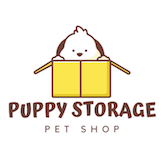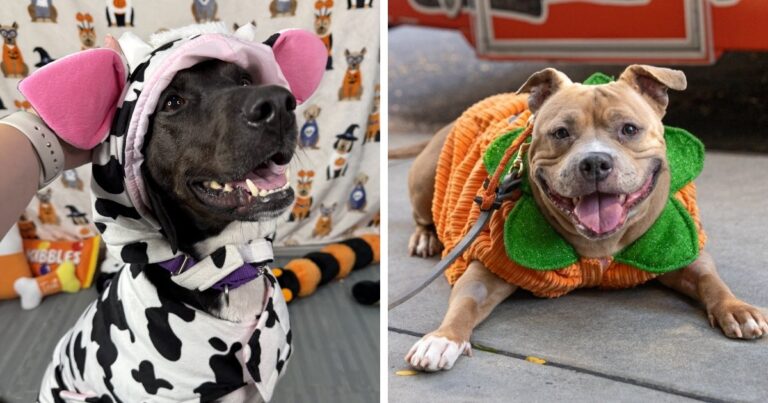Navigating the Heartfelt Harmony of Tackling Separation Anxiety in Dogs
Have you ever wondered how to handle separation anxiety for your little fur baby?
Embark on a heartfelt journey through the world of our canine companions as we delve into the poignant topic of separation anxiety. Just like humans, our furry friends can experience a touch of heartache when left alone. In this extensive guide, we’ll explore the signs of separation anxiety, unravel the emotions behind the woeful whimpers, and equip you with a treasure trove of tips to ease those worried doggy hearts.
Understanding the Overture: Signs of Separation Anxiety
BarkBox - Monthly Dog Subscription Box
Get your puppy the best toys and treats delivered monthly! BarkBox offers premium dog toys, treats, and chews that are perfect for growing puppies. Each box is curated by experts and includes 2 toys, 2 bags of treats, and a chew.
Amazon Puppy Essentials
Everything you need for your new puppy in one place. From crates and beds to food bowls and training pads, Amazon has all the essentials at great prices with fast shipping.
Before we dive into the solutions, let’s take center stage with the overture—a symphony of signs that your pup might be experiencing separation anxiety.
1. The Solo Symphony: Excessive Vocalization If your once-silent home transforms into a solo symphony of whines, howls, or plaintive barks the moment you step out, it could be a telltale sign of separation anxiety. Dogs often express their distress through vocalization, hoping to reconnect with their human maestros.
2. The Tail of Loneliness: Destructive Chewing A wagging tail is a joyous sight, but if that tail turns into a tool of destruction—gnawing on furniture, shoes, or anything within reach—it’s a poignant indication of anxiety. Chewing becomes a comforting outlet for the loneliness that sets in when their human is away.
3. The Pacing Pizzicato: Restless Roaming Picture your pup as a fretful musician, pacing the room in a pizzicato of restlessness. Excessive pacing or constant movement when left alone can be a clear sign that your dog is struggling with the solitude.
4. The Bathroom Ballet: Accidents Indoors A well-house-trained dog suddenly reverting to a bathroom ballet of indoor accidents may be grappling with anxiety. When left alone, the stress can lead to unexpected puddles or piles as a way for them to cope with their emotional turmoil.
5. The Odysseys of Escape: Attempted Breakouts Houdini would be proud of the escape artist tendencies displayed by dogs with separation anxiety. If your pup is determined to break free from their confines, whether it’s through doors, windows, or even walls, it’s a desperate attempt to reunite with their beloved humans.
6. The Symphony of Slobber: Excessive Drooling A well-adjusted dog typically doesn’t turn into a slobbering maestro unless separation anxiety enters the scene. Excessive drooling, especially when paired with other signs, can be an indicator of emotional distress.
7. The Dismal Demeanor: Changes in Behavior Pay attention to subtle changes in behavior. Is your once-upbeat pup now somber and subdued when you return home? Dogs with separation anxiety may display a noticeable shift in demeanor, showing signs of sadness or depression.
Alleviating the Heartfelt Harmony: Tips to Soothe Separation Anxiety
Now that we’ve explored the overture, it’s time to compose a harmonious counter-melody—a guide to alleviating separation anxiety in your cherished canine companion.
1. Prelude to Departure: Low-Key Goodbyes Start with a gentle prelude to departure. Avoid creating a dramatic farewell ritual that intensifies the anticipation of your departure. Instead, keep your goodbyes low-key to reassure your pup that leaving is just a temporary state.
2. Aria of Distraction: Engage with Interactive Toys Drown out the solo symphony of whimpers with an aria of distraction. Engage your pup with interactive toys that dispense treats or provide mental stimulation. This not only keeps them occupied but also creates positive associations with your departure.
3. Enchanting Environments: Create a Comfortable Space Transform your home into an enchanting environment by creating a comfortable space for your pup. Include their favorite toys, a cozy bed, and items that carry your scent. This designated area becomes a haven of security in your absence.
4. Operatic Opulence: Gradual Alone Time Build up your dog’s tolerance to being alone through gradual operatic opulence. Start with short periods of separation, gradually extending the duration. This gradual approach helps desensitize your pup to the idea of you being away.
5. Counterpoint of Calm: Avoid Making a Fuss When you return home, embrace the counterpoint of calm. Avoid making a fuss or lavishing excessive attention on your pup. This helps in normalizing your arrivals and departures, making them less emotionally charged.
6. Symphonic Sounds: Canine-Calming Music Introduce the symphonic sounds of canine-calming music. There are specially curated playlists designed to soothe anxious dogs. The rhythmic tunes can create a serene ambiance that eases their distress.
7. Virtuoso Vet Consultation: Seek Professional Guidance If separation anxiety persists, consider consulting a virtuoso vet. Professional guidance can provide tailored solutions, including behavior modification techniques or, in some cases, medication to alleviate severe anxiety.
8. Sonata of Socialization: Gradual Exposure to Absence Compose a sonata of socialization by gradually exposing your pup to your absence. Leave the house for short intervals and return before anxiety peaks. Over time, extend these intervals to help your dog acclimate to periods of solitude.
9. Heartfelt Harmony of Routine: Establish Consistency Dogs thrive on routine, and the heartfelt harmony of consistency can be a balm for separation anxiety. Establish a predictable routine for feeding, walks, and departures, creating a comforting cadence in their daily lives.
10. Duet of Distancing: Foster Independence Encourage a duet of distancing by fostering independence. Train your pup to enjoy alone time through activities like puzzle toys or practicing basic commands. This helps build their confidence and resilience when left alone.
Coda: The Melody of Reassurance
As we reach the coda of our symphony, it’s essential to remember that addressing separation anxiety is a nuanced journey. Each dog is a unique melody, and the key to success lies in understanding their individual needs and emotions.
The melody of reassurance is ongoing—a continuous effort to create a harmonious environment where your pup feels secure and loved. Through patience, understanding, and the orchestration of positive experiences, you can guide your furry friend towards a heartfelt harmony that embraces both togetherness and moments of solitude.
So, let the melody of reassurance play on, weaving a tapestry of love, understanding, and a symphony of comfort that resonates in every wag, bark, and joyful leap. 🐾🎵💖






